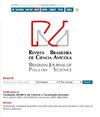人工智能伦理对Chat GPT探索的预测
IF 1.1
4区 农林科学
Q3 AGRICULTURE, DAIRY & ANIMAL SCIENCE
引用次数: 5
摘要
在过去的几十年里,自然语言处理的创新使得以各种方式合成和理解连贯文本成为可能,将理论技术转化为实际实现。这两份报告都总结了软件和内容写手等行业受到了广泛的语言模型的显著影响。然而,根据观察,一个巨大的语言模型可能显示出社会偏见的证据,由于疏忽造成道德和环境危害。因此,有必要为负责任的LLM(大型语言模型)制定全面的指导方针。尽管大量的实证调查表明,复杂的大型语言模型几乎没有伦理困难,但目前还没有对大型语言模型使用的合法性进行彻底的调查和消费者研究。我们使用OpenAI ChatGPT3的定性研究方法来解决当前大型语言模型中现实世界的伦理风险,以进一步指导正在进行的负责任地构建伦理大型语言模型的工作。我们从偏倚和稳健性四个角度仔细回顾了ChatGPT3。根据我们陈述的观点,我们客观地在一些样本数据集上对ChatGPT3进行基准测试。在这项工作中,发现目前的基准没有解决很大一部分原则性问题;因此,提供了新的案例来支持这一观点。此外,还讨论了ChatGPT3的人工智能伦理的重要性,未来的潜在问题,以及对大型语言模型的有益设计考虑。这项研究可能为未来的调查和减轻技术在大型语言模型应用中所带来的伦理风险提供一些指导。本文章由计算机程序翻译,如有差异,请以英文原文为准。
Prognosis of exploration on Chat GPT with artificial intelligence ethics
Natural language processing innovations in the past few decades have made it feasible to synthesis and comprehend coherent text in a variety of ways, turning theoretical techniques into practical implementations. Both report summarizing software and sectors like content writers have been significantly impacted by the extensive Language-model. A huge language model, however, could show evidence of social prejudice, giving moral as well as environmental hazards from negligence, according to observations. Therefore, it is necessary to develop comprehensive guidelines for responsible LLM (Large Language Models). Despite the fact that numerous empirical investigations show that sophisticated large language models has very few ethical difficulties, there isn't a thorough investigation and consumers study of the legality of present large language model use. We use a qualitative study method on OpenAI's ChatGPT3 to solution-focus the real-world ethical risks in current large language models in order to further guide ongoing efforts on responsibly constructing ethical large language models. We carefully review ChatGPT3 from the four perspectives of bias and robustness. According to our stated opinions, we objectively benchmark ChatGPT3 on a number of sample datasets. In this work, it was found that a substantial fraction of principled problems are not solved by the current benchmarks; therefore new case examples were provided to support this. Additionally discussed were the importance of the findings regarding ChatGPT3's AI ethics, potential problems in the future, and helpful design considerations for big language models. This study may provide some guidance for future investigations into and mitigation of the ethical risks offered by technology in large Language Models applications.
求助全文
通过发布文献求助,成功后即可免费获取论文全文。
去求助
来源期刊

Brazilian Journal of Poultry Science
农林科学-奶制品与动物科学
CiteScore
1.80
自引率
9.10%
发文量
60
审稿时长
>12 weeks
期刊介绍:
A Revista Brasileira de Ciência Avícola surgiu em 1999 a partir da necessidade que a comunidade científica possuía de um periódico para veiculação e publicação de seus trabalhos, com a publicação de três números anuais.
A Revista conta hoje com um corpo editorial altamente qualificado e com artigos científicos desenvolvidos pelos maiores especialistas da área, o que a cada dia atrai mais leitores em busca de inovação e respaldo técnico.
Devido à credibilidade que conquistou pelos esforços de sus autores, relatores e revisores, a Revista ganhou caráter de coleção, sendo consultada como fonte segura de estudo desenvolvidos na Avicultura.
A partir de 2003 – volume 5 -, a Revista passou a chamar-se Brazilian Journal of Poultry Science, e todos os trabalhos passaram a ser publicados em inglês. No mesmo ano subiu para quatro o número de revistas por volume, ampliando-se assim os trabalhos publicados anualmente.
 求助内容:
求助内容: 应助结果提醒方式:
应助结果提醒方式:


